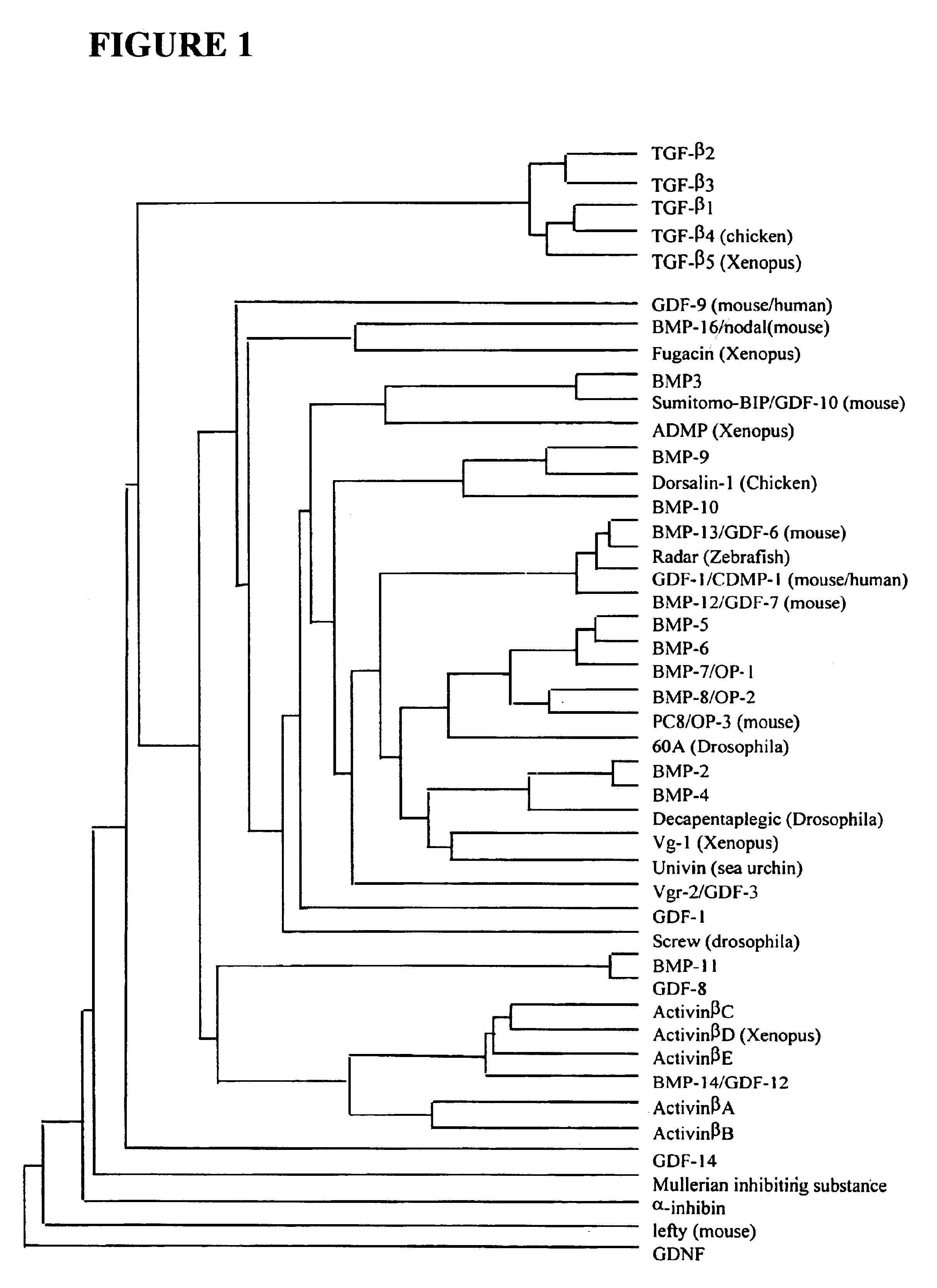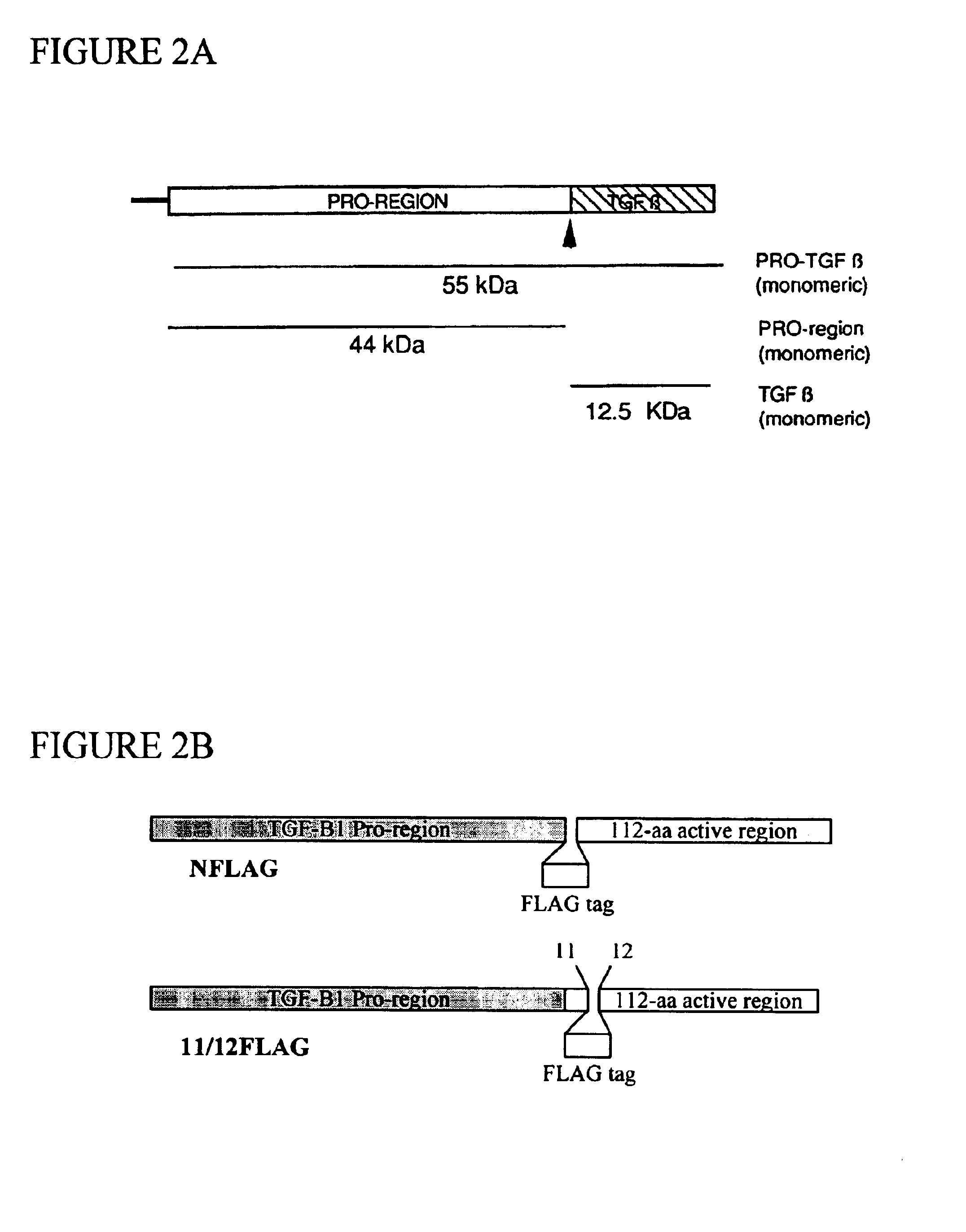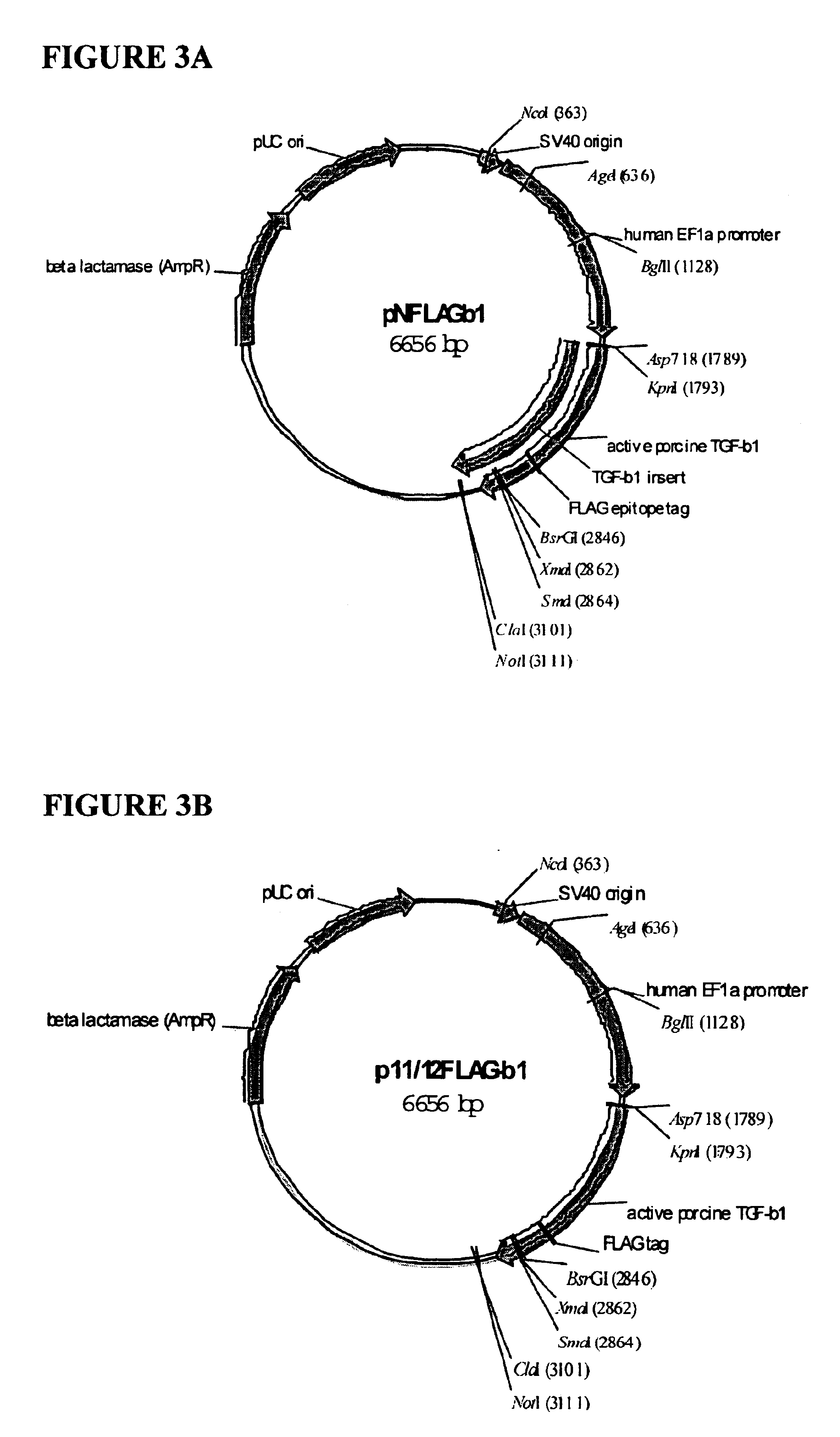Functionalized TGF-beta fusion proteins
a fusion protein, functional technology, applied in the direction of peptides, peptide/protein ingredients, peptide sources, etc., can solve the problems of limited clinical use value, 1 antibody available, and high cost of radioactive iodination process
- Summary
- Abstract
- Description
- Claims
- Application Information
AI Technical Summary
Benefits of technology
Problems solved by technology
Method used
Image
Examples
example 1
Construction and Expression of FLAG-TGF-.beta.1 and 11 / 12FLAG-TGF-.beta.1
This example describes the construction and expression of two biologically functional TGF-.beta. fusion proteins, each comprising the FLAG epitope tag near the N-terminus of the mature TGF-.beta. protein. The disclosed epitope-tagged TGF-.beta. differs fundamentally from earlier attempts to tag TGF-.beta. in that the inventors have succeeded in expressing epitope-tagged biologically active TGF-.beta. in a mammalian host.
Expression of the FLAG-TGF-.beta. fusions described in this example is driven by the human elongation factor 1-alpha (EF1-.alpha.) gene promoter, a strong promoter capable of driving expression in virtually any type of cell. Two FLAG-tagged TGF-.beta.1 constructs, differing only in the location of insertion of the FLAG tag, are described. In one, the FLAG tag is inserted immediately following the cleavage site (N-terminal in the mature, processed TGF-.beta.1 molecule). In the second construct, F...
example 2
Biological Activity of FLAG-TGF-.beta.1 and 11 / 12FLAG-TGF-.beta.1
This example provides assays that can be used to test the biological activity of TGF-.beta. fusion molecules. In particular, this example demonstrates that representative functionalized TGF-.beta. fusion proteins have TGF-.beta. biological activity at least as great as native TGF-.beta., in spite of the addition of the FLAG epitope tag. Biological activity is demonstrated by two independent methods: (1) growth inhibition of CCL64 cells; and (2) phosphorylation of smad 2 in NMuMG cells.
Smad2 Phosphorylation Studies.
NmuMG cells were plated in 60-cm dishes, incubated in medium containing 0.5% FBS for three hours. COS cell supernatants from cells transfected with various TGF-.beta.1 plasmids were added to these cells (after first washing extensively with PBS). The cells were then incubated with the supernatants for 30 minutes. Cells were washed with PBS and scraped off the dishes. Cell pellets were dissolved in NP-40 lysis...
example 3
Use of FLAG-TGF-.beta.1 and 11 / 12FLAG-TGF-.beta.1 in Experimental Systems.
This example demonstrates that the functionalizing peptide portion of the subject fusion proteins is functional in biological and test systems. FLAG-TGF-.beta.1 has been successfully used in a number of different assays. FLAG-TGF-.beta.1 was used to (1) detect expression of tagged ligand in transfected cells; (2) detect cell surface expression of TGF-.beta. receptor complexes by flow cytometry; and (3) measure cell surface levels of receptor complexes in a non-radioactive cross-linking assay. The tagged ligand is a safer, faster and cheaper alternative to the use of [.sup.125 I] radiolabeled TGF-.beta.1 ligand and expands the repertoire of techniques that can be used to look at TGF-.beta. receptor expression levels.
A. Flow Cytometry: Detection of receptor Molecule T.beta.RI Using FLAG-TGF-.beta.1
Cells were incubated with FLAG-TGF-.beta.1 in FACS buffer. Next, cells were incubated with a FITC-conjugated goat an...
PUM
| Property | Measurement | Unit |
|---|---|---|
| Tm | aaaaa | aaaaa |
| total volume | aaaaa | aaaaa |
| concentration | aaaaa | aaaaa |
Abstract
Description
Claims
Application Information
 Login to View More
Login to View More - R&D
- Intellectual Property
- Life Sciences
- Materials
- Tech Scout
- Unparalleled Data Quality
- Higher Quality Content
- 60% Fewer Hallucinations
Browse by: Latest US Patents, China's latest patents, Technical Efficacy Thesaurus, Application Domain, Technology Topic, Popular Technical Reports.
© 2025 PatSnap. All rights reserved.Legal|Privacy policy|Modern Slavery Act Transparency Statement|Sitemap|About US| Contact US: help@patsnap.com



